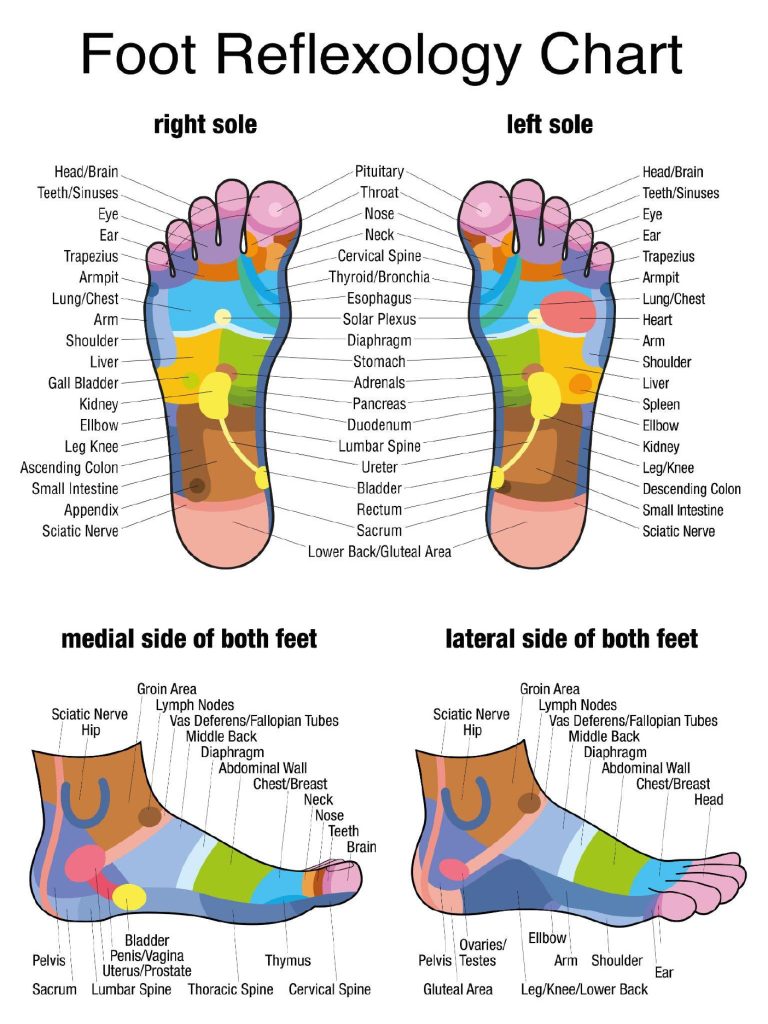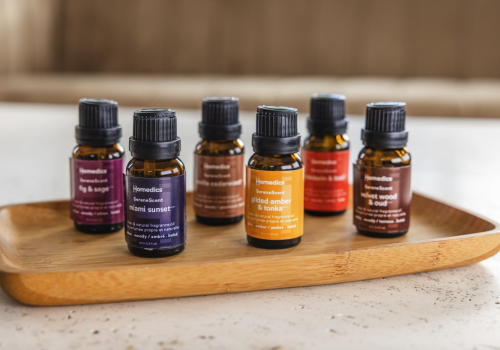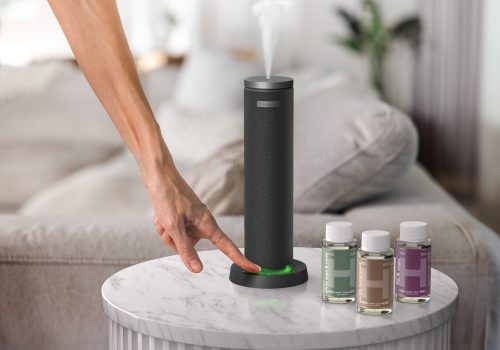What Is Reflexology Massage? A Foot Massage for Your Whole Body
You might think reflexology is just another foot massage. But a reflexology massage uses an entirely different kind of technique from your standard massage session.
Reflexology relies on a believed connection between specific pressure points on the feet, hands, and ears and the corresponding areas throughout the body.
It’s a foot massage, but it’s not just a foot massage.
Reflexology aims to use these pressure points to help relieve tension and discomfort throughout the rest of your body.
Ready to learn more about how this massage technique works and what it does? Here’s your crash course in the art of reflexology.
What Is Reflexology?
Reflexology is a type of foot massage treatment in which a practitioner applies pressure to specific reflex points on your feet and, sometimes, your hands and ears.
Unlike a standard foot massage, which commonly includes different massage styles, rhythms, vibrations, and tools, a reflexology practitioner primarily uses their hands to apply firm, steady pressure to your feet. Their goal isn’t simply to massage your muscle tissue. Instead, they’re focused on applying pressure to specific points that may affect how the rest of your body feels.
Foot reflexology doesn’t treat specific medical conditions and it’s not a substitute for medical treatment. Instead, it’s a type of complementary therapy that may work alongside other treatments. At its core, a reflexology massage session is meant to relax you and help you manage stressful or uncomfortable feelings in your body by manipulating the corresponding points on your feet, hands, and ears.
How Does Reflexology Work?
At the core of the practice is the belief that a reflexologist can help promote relaxation and healing throughout the body by applying pressure to specific pressure points. A practitioner will use a foot reflexology chart, which maps out how various parts of the foot are believed to correspond to organs, muscles, and other body parts.
This chart—or map—is based on the reflexology zone theory.
Reflexology Zone Theory

The zone theory states that your foot is divided into invisible zones, and the zones correspond to different parts of the body.
This is where the foot reflexology chart comes into play.
Reflexology divides the body vertically into 10 zones, and each foot into 5 matching zones. The zones run outward from Zone 1 at the center of your body to Zone 5 at either side. On your foot, Zone 1 is on the inside from your big toe to your heel, while Zone 5 runs along the outside from the pinky toe.
The chart describes which areas of the foot correspond to which regions of the body.
For example, the areas on a reflexology map of your left foot correspond to the left side of your body, including the muscles, organs, and other body parts located there. The areas on a reflexology map of your right foot correspond to the right side of your body.
According to reflexologists, by placing pressure on a zone in the foot, you can trigger relaxing responses by the central nervous system in the regions of the body related to that specific zone. In that way, a practitioner aims to map pressure points on your feet to points of discomfort throughout your body.
When you describe some discomfort or tension that you’re experiencing to a reflexologist, they will consult the foot chart to determine which pressure points they can massage to best address that issue.
Differences Between Foot Massage and Reflexology
The distinction between reflexology and a standard massage might still seem a bit unclear. The differences between the two types of massage are mainly in intention and technique.
Foot massages focus on relieving tired or sore feet. A foot massage directly manipulates the area of tension or pain to alleviate discomfort in that area.
Reflexology uses the foot massage to affect the rest of the body—not just the muscles in your foot. You’ll still feel the soothing effects of a massage on your feet, but the goal is also to target and relieve discomfort in other parts of the body.
If you’re doing self-reflexology at home, you can choose to use a foot massage device to increase the soothing effects of the massage and help you relax. You can even use the warming features of some foot massagers to help further alleviate tension.
What Are the Potential Benefits of Reflexology?
It’s believed that a reflexology massage may have several benefits on different areas of the body, including the following overall wellness benefits.
Promote Relaxation
One not-so-surprising effect of reflexology massage is that it can promote relaxation. It’s a form of massage, after all. If you’ve never experienced the pleasure of a soothing foot massage after long days on your feet, you don’t know what you’re missing.
The firm but steady pressure of a reflexology massage can be a wonderfully relaxing way to relieve soreness and tension in your feet and help your body relax.
Help You Manage Stress
Stress management is another potential benefit of a reflexology foot massage.
In the peaceful state of relaxation and tranquility that you can fall into during the comforting pressure of a foot massage, you can more easily enjoy the present moment, practice mindfulness, and prepare yourself to better respond to and manage stressful events and responsibilities.
Increase Your Positive Feelings
As you feel your stress start to slip away under the soothing influence of a reflexology massage, you may find yourself experiencing more positive feelings and your mind wandering to more optimistic thoughts. Even a few moments of quiet and calm can have a huge effect on your emotional wellbeing, and a 30-minute reflexology massage session will give you plenty of time to sit comfortably and reflect on how you’re feeling and what you’re grateful for.
Feel More Energy
According to reflexology theory, the practice may help you feel more energized after a session. When you’re feeling drained or burned out, a slow foot massage might be just what you need to help you feel rested and refreshed.
Especially after a relaxing reflexology massage, you may feel rejuvenated and better prepared to face your tasks and responsibilities.
Help Relieve Pain and Soreness
If you spend a lot of time walking, running, or standing, your feet probably don’t get much rest. Give them a break! When you’re feeling sore and tense from work or workouts, a reflexology massage on your feet may help alleviate some of that tension and help you kickstart your recovery.
There’s also been some research into the potential effects of reflexology massage on other types of pain. In a 2015 study—a randomized controlled trial on infants—participants who received reflexology responded less severely to pain from an injection than those who didn’t.
What to Expect in a Reflexology Session
In a reflexology session, there’s not much more to it than sitting and relaxing. At the start of a session, you’ll describe for the practitioner any specific tension or discomfort you’re experiencing. This will help them determine where to focus their efforts.
Depending on the length of your appointment and your specific needs, reflexology massages can be as short as a few minutes or as long as an hour. And self-reflexology can be as long as you have time for.
During the massage, you’ll likely be sitting in a comfortable reclining chair or lying on a standard massage table. While many practitioners simply use their hands, some might use additional massage tools. Overall, a reflexology massage session will be calm, quiet, and relaxing. In most cases, talking is optional but allowed. You also won’t be in trouble if you dose off during the massage.
Reflexology massage typically involves applying pressure to the feet, but a practitioner might also massage pressure points on your hands and ears as part of the session. Because reflexology focuses on your feet, hands, and ears, you can remain clothed with the exception of your feet. You may find it more comfortable to remove your glasses if your ears are going to be involved in the massage.
By going to a professional who is skilled in the art of reflexology, you can learn what a proper reflexology massage feels like before attempting to do it yourself.
Self-Reflexology Massage
If you don’t have the time to schedule an appointment or just want to try the practice at home first, you can do reflexology yourself.
Find a comfortable position on your bed, a yoga mat, or another pad, and take off your socks. Cross your legs and focus on breathing steadily to help yourself relax.
Consult a reflexology chart to find the specific areas you want to focus on, or simply start with your toes to begin at the topmost zones—your head and neck.
Apply pressure with your fingers, focusing on one area of the foot at a time. Then, slowly proceed to the next area and let your body relax as you work through the tension you might not have realized you were holding onto.
Breathe deeply, keep the pressure steady, and enjoy each moment of peace and relaxation.
Reflexology Treatment for Overall Wellbeing
Reflexology can be a soothing complementary therapy that may help relieve discomfort in different parts of the body through a relaxing foot massage.
Explore more about the general benefits of foot massage therapy and reflexology and how a foot massager can help you relax and refresh.
Medical Disclaimer: This content is provided for informational purposes only and not intended to be a substitute for professional medical advice, diagnosis or treatment.





